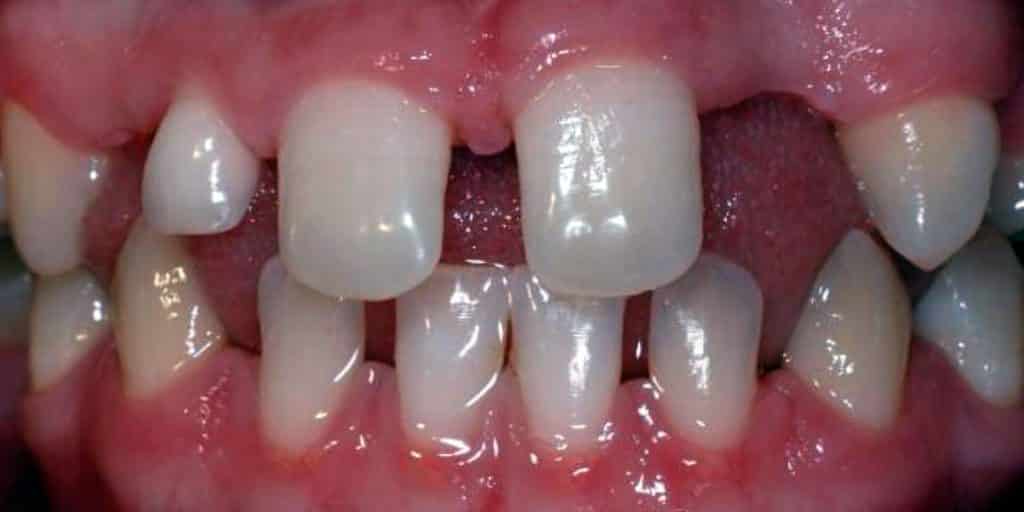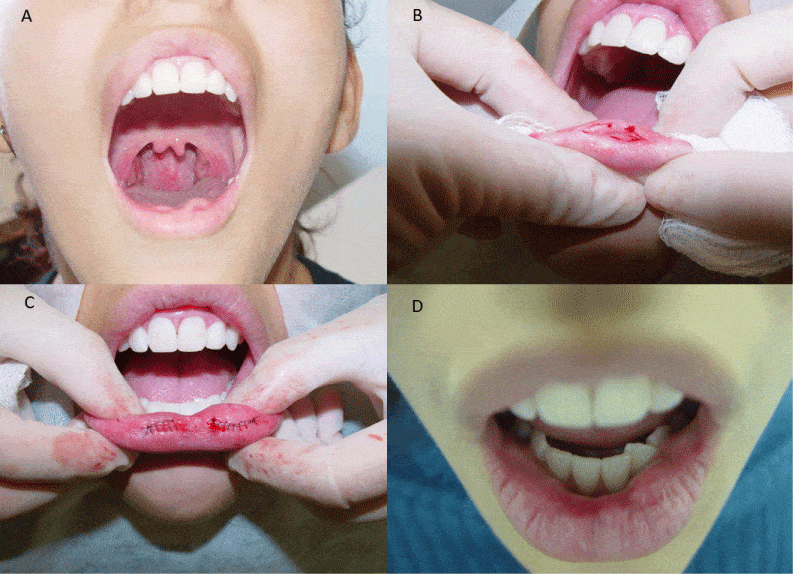5 Key Points – Van der Woude Syndrome
- Van der Woude syndrome is a rare autosomal dominant disorder characterised by lower lip pits and cleft lip with or without cleft palate.
- The current evidence suggest and incidence between 1:35,000 to 1:100,000 person
- Clinical presentation is variable because of the autosomal dominant inheritance with incomplete penetrance. It is commonly related to mutations in interferon regulatory factor 6 (IRF6).
- Other common associated clinical features include hypodontia and high-arched palates.
- Management is a multidisciplinary approach, genetic counselling and surgical correction of lip pits and cleft.

Definition of van der Woude Syndrome
van der Woude syndrome is a rare autosomal dominant disorder that is characterized by a cleft lip and palate with congenital lip pits. It is often related to mutations in mutations in interferon regulatory factor 6 (IRF6).
Genetics of van der Woude Syndrome
Most commonly related to mutations in interferon regulatory factor 6 (IRF61)
- IRF6 codes for a transcription factor that is involved in the early development.
- The mutated copy of the gene decreases the amount of active protein and results in the defects associated with this syndrome and popliteal pterygium syndrome.
Literature varies regarding the incidence. Evidence suggest it is between 1:35,000 to 1:100,000 person1
Clinical Picture of van der Woude Syndrome
Originally described in 1845 by DeMarquay, this syndrome was extensively researched & its full description was provided by Van der Woude in 19542.
Lip Pits
- Bilateral paramedian lower lip sinuses
- Pits are usually two and symmetrical3.
- Associated with cleft lip and palate (two-thirds) and cleft lip or palate (one-third)3

Usually, these pits are asymptomatic, but can present with drainage of either clear fluid or salivary secretions. Pits are from accessory salivary glands. The exact embryology of the formation of these pits is unknown, but there has been much speculation regarding their formation during the early embryonic stages4.
The sinuses are usually circular or slit like, and can present with a mucosal ridge or a conical elevation. The orifice is usually lined with epithelial cells and extends down through the orbicularis oris, to the level of the vermilion. It can also connect with the mucosal glands of the lower lip.
Other Features
- Hypodontia (up to 86%)5
- High-arched palates
- Ankyloglossia
- Syndactyly
- Thumb Hyperplasia
- Sygnathia

Preauricular skin tags are not associated with van der Woude syndrome.5 This is a strong differentiating feature from Goldenhar Syndrome.
Management of van der Woude Syndrome
Multidisciplinary Team
Treatment of patients with van der Woude Syndrome includes regular cleft team care. Genetic counselling should be pursued given the autosomal dominant nature and the high penetrance and expressivity of this syndrome.
Surgery
Patients with van derWoude Syndrome of required staged surgical procedures.
Cleft lip and palate should be repaired at appropriate times.
The lower lip pits can be addressed as well. It is important to note that if these are excised, the full sinus should be tracked and excised. If any remnants are left, there is a risk for mucocele development.

References
- 1. Stanier P, Moore G. Genetics of cleft lip and palate: syndromic genes contribute to the incidence of non-syndromic clefts. Hum Mol Genet. 2004;13 Spec No 1:R73-81. doi:10.1093/hmg/ddh052
- 2. VAN D. Fistula labii inferioris congenita and its association with cleft lip and palate. Am J Hum Genet. 1954;6(2):244-256. https://www.ncbi.nlm.nih.gov/pubmed/13158329.
- 3. Rizos M, Spyropoulos M. Van der Woude syndrome: a review. Cardinal signs, epidemiology, associated features, differential diagnosis, expressivity, genetic counselling and treatment. Eur J Orthod. 2004;26(1):17-24. doi:10.1093/ejo/26.1.17
- 4. Kitamura H. Congenital fistula of the lip. Embryology of the Mouth and Related Structures. 1989:255–256.
- 5. Lam A, David D, Townsend G, Anderson P. Van der Woude syndrome: dentofacial features and implications for clinical practice. Aust Dent J. 2010;55(1):51-58. doi:10.1111/j.1834-7819.2009.01178.x
- 6. Santiago de Almeida R. Surgical Treatment of Lip Pits In The Van Der Woude Syndrome. JDODT. March 2017:1-3. doi:10.15226/jdodt.2017.00180


